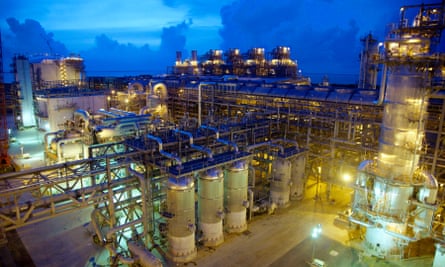Extract from The Guardian
‘Good old days’ of low gas prices long gone making role as ‘transition fuel’ unfeasible, Grattan Institute reports.

Last modified on Sun 15 Nov 2020 21.02 AEDT
The gas industry will inevitably decline as an energy source for industry and homes due to both economic and environmental issues, and will not deliver the Morrison government’s promised “gas-led recovery”, a new report finds.
The analysis by the Grattan Institute said most of the cheap gas on the east coast had already been burned and what remained would become increasingly expensive, undermining the case for its increased use as a “transition fuel” on the path to a low-emissions future.
It is one of two reports released on Sunday that challenge claims by Scott Morrison and the energy minister, Angus Taylor – backed by some in Labor, including vocal outgoing frontbencher Joel Fitzgibbon – that extracting and using more of the fossil fuel will be central to the economic recovery from recession.
The prime minister has announced $52.9m for planning to increase gas supply and transportation infrastructure, and quoted a gas industry estimate that 225,000 manufacturing jobs were heavily reliant on the energy source.
The report by the Grattan Institute, a policy-focused organisation connected to the University of Melbourne, found “the good old days” of low gas prices would not return and, as Guardian Australia has reported, that even if it was possible to reduce the price, the benefit to manufacturing industries had been significantly overstated.
Rather than 225,000, it said only about 10,000 people were employed in gas-intensive manufacturing. Most were in Western Australia, which already had low gas prices.
Tony Wood, the Grattan Institute’s energy program director, said Australia must cut greenhouse gas emissions to meet its international commitments, and that would mean reducing gas use.
While gas would be used for decades to come, there was clear evidence it was in decline for both economic and environmental reasons and that its role would shrink, he said.
“Rather than indulging in wishful thinking or living in denial, the federal government and the gas industry – and its customers – should start planning now for a future without natural gas, or at least a dramatically reduced role for natural gas,” Wood said.
The government rejected the Grattan Institute’s analysis. A spokesperson for Taylor said the assessment of the impact on the manufacturing sector was “narrow, oversimplified and does not reflect industry’s own views”.
“The government does not agree with conclusions drawn in the report, particularly in relation to the impacts on the manufacturing sector jobs and the role of gas powered generation,” they said.
A separate report by the Australia Institute, a progressive think tank, also challenged the idea that attempts to spark a gas-led recovery could help manufacturing industries.
It found less than 1% of Australian gas is used as a manufacturing feedstock. The overwhelming majority – 82% – is either exported or used by the liquified natural gas (LNG) export industry in processing.
The report said manufacturing jobs were not historically linked to a cheap gas supply, having been in long-term decline before the LNG export industry expanded and led to a tripling of the gas price over the past decade. It said the gas industry used more gas in processing LNG for export than the entire manufacturing sector.
Richie Merzian, the director of the Australia Institute’s climate and energy program, said it showed the idea that the country needed to extract more gas to support manufacturing was a “complete furphy”.
“If the government was serious about increasing manufacturing jobs they would fund measures to help manufacturers reduce their dependence on expensive gas rather than handing money over to the gas industry,” Merzian said.
The Grattan Institute found the government’s best path would be to support the development and deployment of low-emissions alternatives that could replace gas in manufacturing, including hydrogen and electricity created using renewable energy.
At a household level, it said it made sense to either replace gas with low-emissions biomethane or hydrogen or to switch to electricity for heating and cooking.
Wood called for a moratorium on new gas connections at houses in New South Wales, Queensland and South Australia, saying they would save money if they used electricity.
The new Labor-Greens government in the Australian Capital Territory recently announced it would legislate next year to ban gas connections in greenfield developments, and develop a program to phase out gas in existing areas.
Wood said the evidence showed the idea that gas was a “transition fuel” in the electricity sector no longer stacked up as it was cheaper to replace closing coal-fired power plants with solar and wind.
While gas-fired power would play an important role in power generation as a back-up for variable renewable energy, that did not require large volumes of new gas, he said.
Gas is often described as having half the emissions of coal, but recent studies have suggested it could be more. A recent analysis suggested Australia’s emissions accounting underestimates national emissions by about 10%, largely due to a failure to properly recognise the impact of methane – a short-lived but potent greenhouse gas – released during gas production.
No comments:
Post a Comment